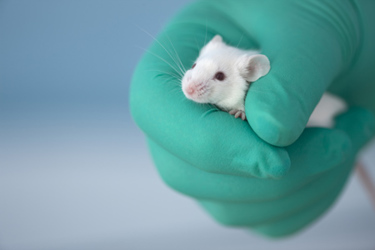Perfused Organ Models: An Alternative To Animal Testing
By Jared Lumauig, Azita Patel, and Jessica Williams

Animal testing has been a long-standing practice in biomedical research, providing valuable insights into disease mechanisms, drug efficacy, and safety. However, ethical concerns, limitations of animal models, and increasing awareness of animal welfare have prompted the development of alternative methods.
FDA Modernization Act 2.0: What Does It Mean, And Why Was It Passed?
On Sept. 29, 2022, Congress passed the FDA Modernization Act 2.0 that loosened the requirement to perform animal studies before human trials.
In summary, the bill "authorizes the use of certain alternatives to animal testing, including cell-based assays and computer models, to obtain an exemption from the Food and Drug Administration to investigate the safety and effectiveness of a drug.
The bill also removes a requirement to use animal studies as part of the process to obtain a license for a biological product that is biosimilar or interchangeable with another biological product.”1
The lead sponsor of the act, Senator Rand Paul, said the act will “accelerate innovation and get safer, more effective drugs to market more quickly by cutting red tape that is not supported by current science, and I’m proud to have led the charge. The inclusion of this bipartisan effort is a step toward ending the needless suffering and death of animal test subjects.”2
The industry trend that many have come to experience is the battle to get products to market as quickly as possible. As a result of this act, the drug and device development process can be expedited by using alternatives to animal studies that can provide similar results. An example of an alternative to animal testing is the perfused organ model (POM) and similarly, ex vivo organ models or organ-on-a-chip models.
What Are Perfused Organ Models (POMs)?
POMs are laboratory setups that replicate the functional and physiological characteristics of specific organs, typically for research or testing purposes. The setup involves isolating an organ from a living organism or obtaining an organ from a donor and perfusing it with a nutrient-rich solution that provides oxygen and other necessary components to keep the organ alive and functioning. This allows researchers to study the organ's physiology, metabolism, and response to various interventions or treatments in a controlled environment, without the need for animal experiments.3
POMs are commonly used in biomedical research to study organ-specific diseases, drug metabolism, toxicity testing, and other physiological processes. They can provide valuable insights into organ function, drug interactions, and disease mechanisms, without the need for animal or human studies. POMs are often used as an intermediate step between in vitro cell culture studies and in vivo animal or human studies, providing a more realistic and controlled experimental setup for investigating organ function and responses to different conditions or treatments. Examples of POMs include perfused liver, heart, lung, kidney, and brain models. These models are widely used in research fields such as pharmacology, toxicology, physiology, and drug discovery to better understand organ function and develop new therapeutic strategies.
POMs have the potential to play a critical role in advancing our understanding of organ physiology, disease mechanisms, and drug development. However, it's important to note that POMs have their limitations and may not always fully replicate the complex physiology and interactions of a live organism. Thus, findings from POMs should be interpreted with caution and further validated in appropriate animal or human studies.4,5
Strengths Of POMs As Animal Testing Alternatives
POMs offer several strengths as alternatives to animal testing:
- Control
POMs may provide improved control over experimental conditions compared to animal models. Researchers can precisely regulate factors such as temperature, oxygen levels, nutrient supply, and perfusate composition in POMs, allowing for standardized and reproducible experiments. This reduces the variability often encountered in animal experiments due to differences in genetics, age, sex, and environmental factors, leading to more reliable and interpretable results.6
- Ethical Issues
POMs reduce ethical concerns associated with animal testing. The use of animals in research has raised questions related to animal welfare, suffering, and rights. POMs offer an opportunity to minimize or eliminate the use of animals in experiments, addressing the concerns and promoting the principles of the 3Rs (replacement, reduction, and refinement). 7,11
- Cost And Time Savings
POMs have the potential for cost and time savings compared to animal testing. Animal experiments can be resource-intensive, involving costs related to animal care, housing, and regulatory compliance. POMs, on the other hand, can be more cost-effective and efficient in terms of experimental setup, maintenance, and scalability. POMs also have the advantage of shorter experimental timelines, as they allow for faster testing of interventions or treatments, enabling quicker data generation and analysis.8,11
Limitations Of POMs In Preclinical Research
Despite their strengths, POMs also have limitations that need to be considered:
- Limited Replicability
First, the organ models may not fully replicate the complex interactions of a live organism. Organs in POMs are isolated from the whole organism, which may not fully capture the systemic effects of interventions or treatments. Due to this isolation, there are several factors involved that must be controlled such as temperature and duration of perfusions. This can limit the ability to study interactions between organs, tissues, and cells, as well as the complex feedback mechanisms that occur in vivo.9
- Obtaining And Maintaining Organs
Second, obtaining and maintaining viable organs for POMs can be challenging. Organs used in POMs need to be carefully selected and prepared to maintain their viability and function. Considering that certain conditions are very specific in a case-by-case study, such as dissolved oxygen concentration, it would be beneficial to assess donor organs before transplantation, but access to human or animal donor organs can be limited and subject to ethical considerations. Additionally, POMs require specialized equipment and expertise for perfusion and maintenance, which may not be readily available in all research settings.
- Translatability To Humans
Third, concerns about the validity and translatability of findings from animal-based POMs to humans need to be addressed. Despite efforts to replicate human physiology, POMs using animal organs may not always accurately represent the complexity of human organs and their responses to interventions. Differences in species-specific physiology, metabolism, and disease mechanisms may affect the relevance and translatability of findings from POMs to humans. While there are concerns about the applicability of animal models to humans, the advantage of the POM is that researchers can also use human organs to evaluate the impact of their product, eliminating the need to use live subjects and instead relying on donor organs. 9,10,11, 13, 14
Why Is Animal Testing Still Used?
Animal studies are often conducted as a preliminary step before clinical trials in humans, as they can help researchers identify potential risks and side effects of the intervention being tested. Certain animals have similar organ systems and biological functions to humans, which allows researchers to observe how a treatment might affect humans in a controlled manner.
Although the use of animals in research is a controversial topic, there are several benefits and limitations to using animal testing.
- Predictive Value
Animal testing allows researchers to evaluate the safety and efficacy of a drug or device in a living system before moving on to clinical trials in humans. This allows researchers to identify potential problems or side effects of a drug or device early on and make modifications or adjustments as needed before testing on humans. Animals are chosen based on their similarity to humans in terms of anatomy, physiology, and genetics, which increases the predictive value of animal testing. This can ultimately lead to safer and more effective drugs and devices for humans.12
Although animal testing may provide promising results, it may not always accurately simulate a human response. For example, some drugs that have been effective in animals have failed to show similar efficacy in clinical trials. Similarly, some drugs that have been safe in animals have been found to be toxic in humans. This is due to overall differences in the biological and genetic makeup of animals and humans, as well as differences in the disease pathophysiology between the two.11,12
- Reduced Risk To Humans
To ensure the safety and efficacy of a product, drug, or device before human testing, it must undergo a sequence of risk assessments and preclinical tests that gather adequate data. By identifying potential risks early on, animal testing can help reduce the risk of harm to human subjects in clinical trials. This is particularly important in cases where the drug or device being tested has the potential to cause serious harm or even death.
- Ethical Issues
Animal testing raises ethical concerns related to animal welfare because the use of animals in research often involves pain and suffering for the animals, which may not be necessary or justified. Some animal experiments may not accurately reflect the conditions and treatments of human diseases, leading to unnecessary suffering and death of animals.11,12
- Cost And Time Constraints
Animal testing can be time-consuming, expensive, and logistically challenging, which can slow down the development of new drugs and devices. Some animals may require special housing, feeding, and handling, which adds to the cost and complexity of the experiments. Additionally, ethical issues surrounding animal welfare can further add to the time and cost of animal experiments, as more regulations and oversight are required.11
POMs Are A Promising Preclinical Research Method
POMs offer a promising alternative to animal testing in scientific research. They provide improved control over experimental conditions, reduced ethical concerns, and potential cost and time savings. However, they also have limitations that need to be addressed, including challenges in replicability, obtaining and maintaining viable organs, and translatability to humans. Despite these limitations, perfused organ models represent a valuable tool for advancing biomedical research and promoting ethical considerations.
To further enhance their utility and reliability, continued research and development in perfused organ models are essential. This includes addressing the limitations of the approach, such as the need to better replicate in vivo interactions and explore the potential use of non-viable organs. Additionally, combining perfused organ models with other in vitro and in silico approaches can provide complementary data and increase the overall confidence in the findings.
As the field of perfused organ models continues to evolve, it holds great promise in advancing our understanding of human physiology and disease. While not a complete replacement for animal testing, POMs may offer a viable alternative. By continuing to develop and refine perfused organ models and combining them with other approaches, we can progress toward more human-relevant research methodologies and reduce the reliance on animal testing in biomedical research. Ultimately, this will benefit scientific knowledge and human health while also promoting ethical considerations.
References:
- S.5002 - 117th Congress (2021-2022): FDA Modernization Act 2.0. (2022, September 29). https://www.congress.gov/bill/117th-congress/senate-bill/5002
- Paul Senate. (2021, December 17). Dr. Paul's Bipartisan FDA Modernization Act 2.0 to End Animal Testing Mandates Included in 2022 Year-End Legislation. Paul Senate. https://www.paul.senate.gov/dr-pauls-bipartisan-fda-modernization-act-2-0-to-end-animal-testing-mandates-included-in-2022-year-end-legislation/
- Huh, D., Hamilton, G. A., & Ingber, D. E. (2011). From 3D cell culture to organs-on-chips. Trends in cell biology, 21(12), 745-754. https://doi.org/10.1016/j.tcb.2011.09.005
- Marx U, Akabane T, Andersson TB, et al. Biology-inspired microphysiological systems to advance patient benefit and animal welfare in drug development. ALTEX. 2020;37(3): 365-394.
- Huh D, Leslie DC, Matthews BD, et al. A human disease model of drug toxicity-induced pulmonary edema in a lung-on-a-chip microdevice. Sci Transl Med. 2012;4(159):159ra147.
- Stoddart, M. J., Kompa, A. R., King, K. L., & Bubner, B. (2020). Ex vivo organ perfusion as a method for drug development: A review. Frontiers in Pharmacology, 11, 73. https://doi.org/10.3389/fphar.2020.00073
- McLean, L. N., & Brown, R. (2020). Advantages and limitations of ex vivo organ culture versus animal models for preclinical testing of tissue-engineered constructs. Tissue Engineering Part B: Reviews, 26(2), 129-143. https://doi.org/10.1089/ten.teb.2019.0209
- U.S. Food and Drug Administration. (2021). Use of ex vivo cultures of human tissues and organs to predict clinical outcome: A workshop report. https://www.fda.gov/media/153999/download
- Holscher, H. D. (2014). Dietary fiber and prebiotics and the gastrointestinal microbiota. Gut Microbes, 5(2), 141-149. https://doi.org/10.4161/gmic.27633
- Ewart, L., De Mazière, A., & Lopez-Terrada, D. (2021). Organotypic cultures as alternatives to animal testing. ATLA: Alternatives to Laboratory Animals, 49(2), 75-87. https://doi.org/10.1177/02611929211014238
- Balls M. Alternatives to Laboratory Animals: Trends in Replacement and the Three Rs. Alternatives to Laboratory Animals. 2022;50(1):10-26. doi:10.1177/02611929221082250
- Pritt SL, Hammer RE. The Interplay of Ethics, Animal Welfare, and IACUC Oversight on the Reproducibility of Animal Studies. Comp Med. 2017 Mar 1;67(2):101-105. PMID: 28381309; PMCID: PMC5402729.
- Curtis CG, Bilyard K, Stephenson H. Ex Vivo Metrics, a preclinical tool in new drug development. J Transl Med. 2008 Jan 23;6:5. doi: 10.1186/1479-5876-6-5. PMID: 18215298; PMCID: PMC2257925.
- Ingber, D.E. Human organs-on-chips for disease modelling, drug development and personalized medicine. Nat Rev Genet 23, 467–491 (2022). https://doi.org/10.1038/s41576-022-00466-9
About The Authors:
 Jared Lumauig is pursuing a master's degree in medical product development management at San Jose State University, where he had also earned his bachelor's degree in biomedical engineering. His work experience consists of design/product R&D development of catheters at large medical device companies. Currently, he is working as an R&D engineer within the vascular division at Abbott to design endovascular catheter delivery systems.
Jared Lumauig is pursuing a master's degree in medical product development management at San Jose State University, where he had also earned his bachelor's degree in biomedical engineering. His work experience consists of design/product R&D development of catheters at large medical device companies. Currently, he is working as an R&D engineer within the vascular division at Abbott to design endovascular catheter delivery systems.
 Azita Patel is pursuing a master's degree in medical product development management at San Jose State University, where she had also earned her bachelor's degree in biomedical engineering. Her work experience consists of a variety of different fields in quality, regulatory, and R&D sustaining systems engineering. Currently, Azita is a regulatory operations specialist at Stryker in its neurovascular division.
Azita Patel is pursuing a master's degree in medical product development management at San Jose State University, where she had also earned her bachelor's degree in biomedical engineering. Her work experience consists of a variety of different fields in quality, regulatory, and R&D sustaining systems engineering. Currently, Azita is a regulatory operations specialist at Stryker in its neurovascular division.
 Jessica Williams is pursuing a master's degree in medical product development management at San Jose State University and holds a bachelor's degree in biomedical engineering. Jessica has had the opportunity to work in a variety of life science industries, from sterilization and medical product development startups to top biotech companies. Currently, Jessica works as a new product development quality engineer and sterility subject matter expert for oncology catheter ablation systems at Galvanize Therapeutics.
Jessica Williams is pursuing a master's degree in medical product development management at San Jose State University and holds a bachelor's degree in biomedical engineering. Jessica has had the opportunity to work in a variety of life science industries, from sterilization and medical product development startups to top biotech companies. Currently, Jessica works as a new product development quality engineer and sterility subject matter expert for oncology catheter ablation systems at Galvanize Therapeutics.
